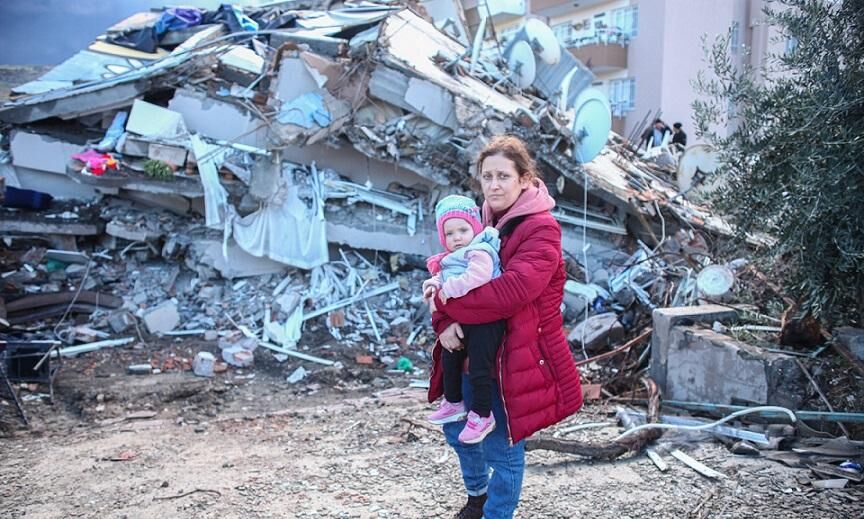Germany's Evolving Immigration Landscape
Germany, a country renowned for its rich history and robust economy, has long been a focal point for global migration. Over recent decades, Germany has seen a notable transformation in its approach to immigration, driven by economic needs, humanitarian concerns, and demographic shifts.
Economic Opportunities and Workforce Needs
Germany's post-war economic miracle transformed it into one of the world's leading industrial powers. With a strong economy came a demand for labor that the local workforce alone could not meet. In the 1960s and 70s, the country signed bilateral agreements with countries like Turkey, Italy, and Greece to bring in "guest workers" (Gastarbeiter) to fill labor shortages. This influx significantly shaped Germany's multicultural landscape.
In recent years, Germany immigration policy has continued to adapt to its economic needs. The country's low birth rates and aging population have created a pressing need for skilled labor. The Federal Skilled Workers Immigration Act, enacted in March 2020, is a testament to this shift. It aims to attract skilled workers from non-EU countries by simplifying the process for recognizing foreign qualifications and easing visa regulations.
Humanitarian Efforts and Refugee Crises
Germany's immigration policy is also deeply influenced by its humanitarian values. The 2015 refugee crisis, marked by a massive influx of individuals fleeing conflict zones, primarily from Syria, Afghanistan, and Iraq, tested Germany's immigration system. Chancellor Angela Merkel's decision to open Germany's doors to refugees was both praised and criticized, reflecting the complex nature of managing large-scale humanitarian efforts.
The German government has since focused on integrating refugees into society, with initiatives aimed at providing language training, educational opportunities, and employment support. Despite challenges, these efforts underscore Germany's commitment to upholding human rights while balancing practical considerations.
Integration and Social Cohesion
The success of Germany immigration policies hinges not just on attracting newcomers, but on their successful integration into society. Integration programs are designed to help immigrants adapt to German culture, understand their rights and responsibilities, and contribute effectively to their new communities.
However, integration is a two-way street. Germany faces ongoing challenges, including addressing societal tensions and ensuring that immigrant communities are welcomed and supported. Efforts to combat discrimination and promote intercultural dialogue are critical in fostering social cohesion.
Looking Ahead
Germany's approach to immigration continues to evolve in response to global dynamics and internal needs. As the country navigates the complexities of demographic changes, economic demands, and humanitarian responsibilities, its immigration policies will likely remain a key area of focus.
In summary, Germany’s immigration landscape is a reflection of its historical context and current realities. Balancing economic needs with humanitarian obligations while promoting successful integration remains central to shaping the future of Germany’s diverse society
please visit: https://shorturl.at/T6dpo
Germany, a country renowned for its rich history and robust economy, has long been a focal point for global migration. Over recent decades, Germany has seen a notable transformation in its approach to immigration, driven by economic needs, humanitarian concerns, and demographic shifts.
Economic Opportunities and Workforce Needs
Germany's post-war economic miracle transformed it into one of the world's leading industrial powers. With a strong economy came a demand for labor that the local workforce alone could not meet. In the 1960s and 70s, the country signed bilateral agreements with countries like Turkey, Italy, and Greece to bring in "guest workers" (Gastarbeiter) to fill labor shortages. This influx significantly shaped Germany's multicultural landscape.
In recent years, Germany immigration policy has continued to adapt to its economic needs. The country's low birth rates and aging population have created a pressing need for skilled labor. The Federal Skilled Workers Immigration Act, enacted in March 2020, is a testament to this shift. It aims to attract skilled workers from non-EU countries by simplifying the process for recognizing foreign qualifications and easing visa regulations.
Humanitarian Efforts and Refugee Crises
Germany's immigration policy is also deeply influenced by its humanitarian values. The 2015 refugee crisis, marked by a massive influx of individuals fleeing conflict zones, primarily from Syria, Afghanistan, and Iraq, tested Germany's immigration system. Chancellor Angela Merkel's decision to open Germany's doors to refugees was both praised and criticized, reflecting the complex nature of managing large-scale humanitarian efforts.
The German government has since focused on integrating refugees into society, with initiatives aimed at providing language training, educational opportunities, and employment support. Despite challenges, these efforts underscore Germany's commitment to upholding human rights while balancing practical considerations.
Integration and Social Cohesion
The success of Germany immigration policies hinges not just on attracting newcomers, but on their successful integration into society. Integration programs are designed to help immigrants adapt to German culture, understand their rights and responsibilities, and contribute effectively to their new communities.
However, integration is a two-way street. Germany faces ongoing challenges, including addressing societal tensions and ensuring that immigrant communities are welcomed and supported. Efforts to combat discrimination and promote intercultural dialogue are critical in fostering social cohesion.
Looking Ahead
Germany's approach to immigration continues to evolve in response to global dynamics and internal needs. As the country navigates the complexities of demographic changes, economic demands, and humanitarian responsibilities, its immigration policies will likely remain a key area of focus.
In summary, Germany’s immigration landscape is a reflection of its historical context and current realities. Balancing economic needs with humanitarian obligations while promoting successful integration remains central to shaping the future of Germany’s diverse society
please visit: https://shorturl.at/T6dpo
Germany's Evolving Immigration Landscape
Germany, a country renowned for its rich history and robust economy, has long been a focal point for global migration. Over recent decades, Germany has seen a notable transformation in its approach to immigration, driven by economic needs, humanitarian concerns, and demographic shifts.
Economic Opportunities and Workforce Needs
Germany's post-war economic miracle transformed it into one of the world's leading industrial powers. With a strong economy came a demand for labor that the local workforce alone could not meet. In the 1960s and 70s, the country signed bilateral agreements with countries like Turkey, Italy, and Greece to bring in "guest workers" (Gastarbeiter) to fill labor shortages. This influx significantly shaped Germany's multicultural landscape.
In recent years, Germany immigration policy has continued to adapt to its economic needs. The country's low birth rates and aging population have created a pressing need for skilled labor. The Federal Skilled Workers Immigration Act, enacted in March 2020, is a testament to this shift. It aims to attract skilled workers from non-EU countries by simplifying the process for recognizing foreign qualifications and easing visa regulations.
Humanitarian Efforts and Refugee Crises
Germany's immigration policy is also deeply influenced by its humanitarian values. The 2015 refugee crisis, marked by a massive influx of individuals fleeing conflict zones, primarily from Syria, Afghanistan, and Iraq, tested Germany's immigration system. Chancellor Angela Merkel's decision to open Germany's doors to refugees was both praised and criticized, reflecting the complex nature of managing large-scale humanitarian efforts.
The German government has since focused on integrating refugees into society, with initiatives aimed at providing language training, educational opportunities, and employment support. Despite challenges, these efforts underscore Germany's commitment to upholding human rights while balancing practical considerations.
Integration and Social Cohesion
The success of Germany immigration policies hinges not just on attracting newcomers, but on their successful integration into society. Integration programs are designed to help immigrants adapt to German culture, understand their rights and responsibilities, and contribute effectively to their new communities.
However, integration is a two-way street. Germany faces ongoing challenges, including addressing societal tensions and ensuring that immigrant communities are welcomed and supported. Efforts to combat discrimination and promote intercultural dialogue are critical in fostering social cohesion.
Looking Ahead
Germany's approach to immigration continues to evolve in response to global dynamics and internal needs. As the country navigates the complexities of demographic changes, economic demands, and humanitarian responsibilities, its immigration policies will likely remain a key area of focus.
In summary, Germany’s immigration landscape is a reflection of its historical context and current realities. Balancing economic needs with humanitarian obligations while promoting successful integration remains central to shaping the future of Germany’s diverse society
please visit: https://shorturl.at/T6dpo
0 Comments
0 Shares
906 Views
0 Reviews











